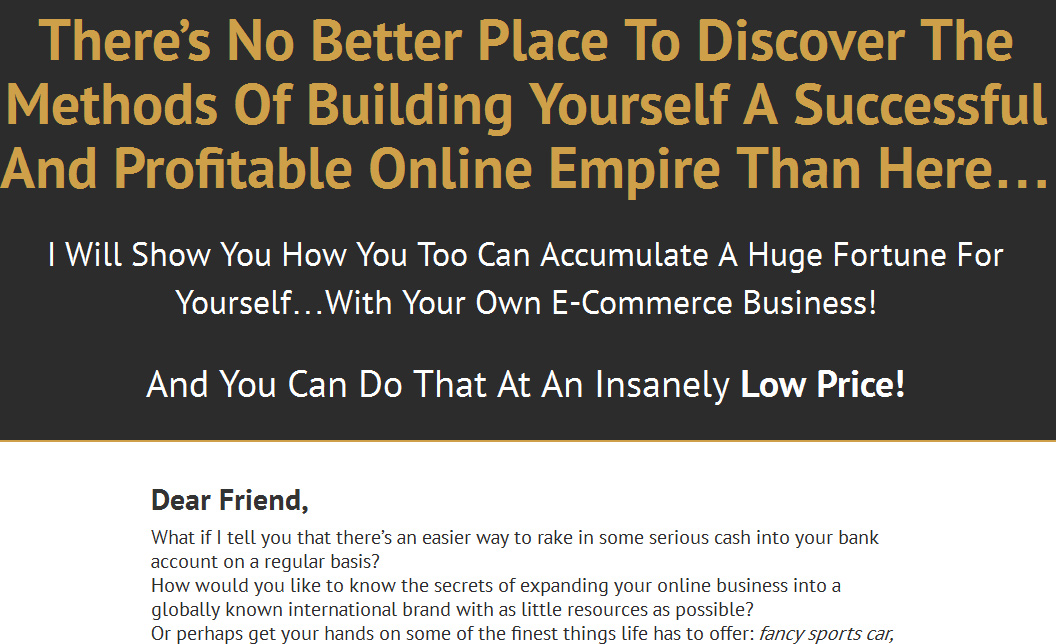Salespage Snapshot:

Sample Content Preview
Why E-Commerce?
The reason, as you shall see, is that e-commerce technology is different and more powerful than any of the other technologies we have seen in the past century. While these other technologies transformed economic life in the twentieth century, the evolving Internet and other information technologies will shape the twenty-first century.
Prior to the development of e-commerce, the process of marketing and selling goods was a mass-marketing and sales force-driven process. Consumers were viewed as passive targets of advertising “campaigns” and branding blitzes intended to influence their long-term product perceptions and immediate purchasing behaviour. Selling was conducted in well-insulated “channels.” Consumers were considered to be trapped by geographical and social boundaries, unable to search widely for the best price and quality. Information about prices, costs, and fees could be hidden from the consumer, creating profitable “information asymmetries” for the selling firm.
Below are the seven unique features of E-commerce technology that make some good reasons for you to start your own e-commerce business.
Ubiquity
In traditional commerce, a marketplace is a physical place you visit in order to transact. For example, television and radio typically motivate the consumer to go someplace to make a purchase. E-commerce, in contrast, is characterized by its ubiquity: it is available just about everywhere, at all times. It liberates the market from being restricted to a physical space and makes it possible to shop from your desktop, at home, at work, or even from your car, using mobile commerce. The result is called a marketspace—a marketplace extended beyond traditional boundaries and removed from a temporal and geographic location. From a consumer point of view, ubiquity reduces transaction costs—the costs of participating in a market. To transact, it is no longer necessary that you spend time and money traveling to a market. At a broader level, the ubiquity of e-commerce lowers the cognitive energy required to transact in a marketspace.
Global Reach
E-commerce technology permits commercial transactions to cross cultural and national boundaries far more conveniently and cost-effectively than is true in traditional commerce. As a result, the potential market size for e-commerce merchants is roughly equal to the size of the world’s online population. The total number of users or customers an e-commerce business can obtain is a measure of its reach.
In contrast, most traditional commerce is local or regional—it involves local merchants or national merchants with local outlets. Television and radio stations, and newspapers, for instance, are primarily local and regional institutions with limited but powerful national networks that can attract a national audience. In contrast to e-commerce technology, these older commerce technologies do not easily cross national boundaries to a global audience.
Universal Standard
One strikingly unusual feature of e-commerce technologies is that the technical standards of the Internet, and therefore the technical standards for conducting e-commerce, are universal standards—they are shared by all nations around the world. In contrast, most traditional commerce technologies differ from one nation to the next. For instance, television and radio standards differ around the world, as does cell telephone technology. The universal technical standards of the Internet and e-commerce greatly lower market entry costs—the cost merchants must pay just to bring their goods to market. At the same time, for consumers, universal standards reduce search costs—the effort required to find suitable products. And by creating a single, one-world marketspace, where prices and product descriptions can be inexpensively displayed for all to see, price discovery becomes simpler, faster, and more accurate. And users of the Internet, both businesses and individuals, experience network externalities—benefits that arise because everyone uses the same technology. With e-commerce technologies, it is possible for the first time in history to easily find many of the suppliers, prices, and delivery terms of a specific product anywhere in the world, and to view them in a coherent, comparative environment. Although this is not necessarily realistic today for all or many products, it is a potential that will be exploited in the future.
Richness
Information richness refers to the complexity and content of a message. Traditional markets, national sales forces, and small retail stores have great richness: they are able to provide personal, face-to-face service using aural and visual cues when making a sale. The richness of traditional markets makes them a powerful selling or commercial environment. Prior to the development of the Web, there was a trade-off between richness and reach: the larger the audience reached, the less rich the message.
Interactivity
Unlike any of the commercial technologies of the twentieth century, with the possible exception of the telephone, e-commerce technologies allow for interactivity, meaning they enable two-way communication between merchant and consumer. Television, for instance, cannot ask viewers any questions or enter into conversationswith them, and it cannot request that customer information be entered into a form. In contrast, all of these activities are possible on an e-commerce Web site. Interactivity allows an online merchant to engage a consumer in ways similar to a face-to-face experience, but on a much more massive, global scale.
Information Density
The Internet and the Web vastly increase information density—the total amount and quality of information available to all market participants, consumers, and merchants alike. E-commerce technologies reduce information collection, storage, processing, and communication costs. At the same time, these technologies increase greatly the currency, accuracy, and timeliness of information—making information more useful and important than ever. As a result, information becomes more plentiful, less expensive, and of higher quality. A number of business consequences result from the growth in information density. In e-commerce markets, prices and costs become more transparent. Price transparency refers to the ease with which consumers can find out the variety of prices in a market; cost transparency refers to the ability of consumers to discover the actual costs merchants pay for products.
Personalization/Customization
E-commerce technologies permit personalization: merchants can target their marketing messages to specific individuals by adjusting the message to a person’s name, interests, and past purchases. The technology also permits customization— changing the delivered product or service based on a user’s preferences or prior behaviour. Given the interactive nature of e-commerce technology, much information about the consumer can be gathered in the marketplace at the moment of purchase.
With the increase in information density, a great deal of information about the consumer’s past purchases and behaviour can be stored and used by online merchants. The result is a level of personalization and customization unthinkable with existing commerce technologies. For instance, you may be able to shape what you see on television by selecting a channel, but you cannot change the contents of the channel you have chosen. In contrast, the online version of the Wall Street Journal allows you to select the type of news stories you want to see first, and gives you the opportunity to be alerted when certain events happen.
Other Details- 10 Ebooks (PDF), 7 Pages
- 1 Salespage (HTML)
- 9 Ecovers (JPG, PNG)
- Sales Video, Course
- Year Released/Circulated: 2016
- File Size: 81,078 KB
License Details:
[YES] Can sell and keep 100% of the sales.
[YES] Can be published offline (physical book, DVD, home study course, etc.)
[YES] Can be bundled into another paid package and sell at a higher price.
[YES] Can be used as a bonus to another product you are selling.
[YES] Can be sold in a Dime sale event.
[YES] Can be added into a paid membership site.
[YES] Can be translated to other language(s).
[YES] Can sell with Resell / Master Resell Rights.
[NO] Can resell or give away with Private Label Rights.
[NO] Can be given away for free.














